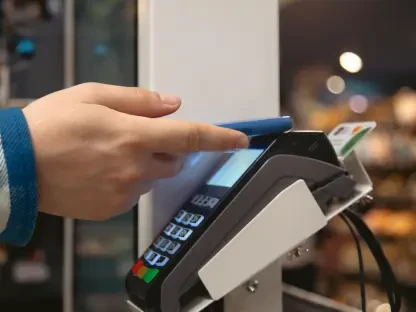Overview of Black Friday and Cyber Monday
In a striking display of consumer resilience, U.S. shoppers are gearing up to spend a staggering $80 billion during the Black Friday and Cyber Monday (BFCM) sales events, marking the unofficial start of the holiday shopping season. These annual retail extravaganzas have become a cultural and economic cornerstone, with millions of Americans hunting for deals, underscoring BFCM’s role as a barometer of retail health and consumer confidence in an ever-shifting economic landscape.
The significance of BFCM extends beyond mere transactions, contributing billions to the economy and serving as a critical period for retailers to boost annual revenues. Major players like Amazon, Walmart, and Target dominate the scene, offering deep discounts to capture a sizable share of consumer wallets. Their strategies often set industry benchmarks, influencing smaller retailers to follow suit in a bid to remain competitive during this high-stakes period.
Digital platforms have transformed the BFCM experience, with online shopping now rivaling in-store purchases in volume and value. Evolving consumer habits, such as a preference for convenience and personalized offers, have pushed retailers to integrate advanced technologies like AI-driven recommendations and mobile apps. This fusion of technology and shopping not only enhances user experience but also redefines how deals are discovered and transactions completed.
Consumer Spending Trends and Projections for BFCM
Key Spending Insights and Behaviors
A remarkable $80 billion in consumer spending is projected for BFCM, reflecting a $20 billion increase over the previous year. This surge, derived from a survey of 1,200 U.S. consumers, highlights a robust appetite for deals despite economic headwinds. On average, shoppers plan to spend $340 on Black Friday and $300 on Cyber Monday, showcasing a willingness to invest in value-driven purchases during these events.
Further insights reveal that 40% of shoppers intend to increase their Black Friday budgets compared to last year, while 32% plan to spend more on Cyber Monday. This uptick suggests a strategic approach, as many consumers aim to maximize savings amid rising costs and mounting debt. The mindset appears to be one of calculated spending, leveraging BFCM as a pivotal moment to secure holiday necessities and gifts at reduced prices.
Economic challenges, including inflation and financial constraints, have not deterred this spending enthusiasm but rather shaped it. Shoppers are approaching BFCM with a focus on stretching their budgets, prioritizing essential and high-value items over impulsive buys. This behavior signals a broader trend of financial pragmatism, balancing immediate needs with long-term fiscal responsibility.
Market Data and Growth Forecasts
Delving into spending brackets, the majority of consumers are expected to allocate between $100 and $499 during BFCM, indicating a cautious yet opportunistic approach. A smaller segment, however, plans to exceed $1,000, pointing to a niche of high spenders likely targeting big-ticket items. These figures paint a picture of diverse spending capacities unified by a common goal of capitalizing on seasonal discounts.
Looking at the broader holiday season, BFCM serves as a launchpad for holiday shopping, though overall restraint is anticipated post-event. Projections estimate a staggering $55 billion in post-holiday debt, underscoring the financial tightrope many Americans walk. This duality of increased BFCM spending and subsequent caution highlights the events’ unique role as both an economic boost and a potential debt trigger.
Expert analysis suggests that BFCM acts as a crucial financial planning window for U.S. shoppers. Industry voices emphasize that these sales events allow consumers to offset holiday expenses through early, discounted purchases. This perspective positions BFCM not just as a retail peak but as a strategic milestone for household budgeting over the coming months.
Challenges Facing Retailers and Consumers During BFCM
Economic pressures are casting a long shadow over BFCM, with higher living costs and credit card debt influencing consumer decisions. Many shoppers are forced to weigh the allure of deals against the reality of strained finances, leading to more selective purchasing patterns. This environment demands that consumers prioritize value, often opting for necessities over luxury items.
Retailers, on the other hand, face intense competition in a crowded market saturated with promotions. Standing out requires more than just slashing prices; it demands creativity in crafting compelling offers that resonate with discerning buyers. The challenge lies in cutting through the noise of countless deals to capture attention and drive conversions in a short, high-pressure window.
To address these hurdles, retailers are exploring solutions like targeted promotions tailored to specific consumer segments. Enhancing customer experiences through seamless online and in-store interactions also plays a vital role. Additionally, tapping into emerging platforms for visibility and engagement offers a way to differentiate in a market where every deal counts.
Payment Preferences and Financial Tools Landscape
Payment methods during BFCM reflect a blend of innovation and caution, with Buy Now, Pay Later (BNPL) services gaining traction. Approximately 21% of shoppers plan to use BNPL on Black Friday, while 17% will opt for it on Cyber Monday, particularly for larger purchases. This trend signals a growing acceptance of flexible payment options in managing holiday spending.
Despite BNPL’s rise, upfront payments remain the dominant choice, driven by a preference for financial control and trust. Nearly half of surveyed consumers favor immediate transactions to avoid accruing additional debt, a reflection of broader concerns about economic stability. This conservative approach underscores the importance of transparency in payment options offered by retailers.
The implications of these payment trends are significant for both retailers and consumers. Retailers must adapt strategies to accommodate diverse preferences, ensuring seamless integration of BNPL alongside traditional methods. For consumers, the balance between leveraging flexible payments and avoiding debt will shape financial outcomes well into the holiday season and beyond.
Future Directions for BFCM Shopping and Retail Strategies
The retail landscape is witnessing a shift with the rise of alternative shopping platforms like Temu, attracting 16% of shoppers, and TikTok Shop, drawing 10%. These newer entrants challenge the dominance of traditional giants like Amazon, which still commands 73% of shopper preference. This diversification hints at a future where social commerce and aggressive pricing reshape how consumers approach BFCM.
Product categories also reveal evolving priorities, with clothing leading at 53% of planned purchases, followed by tech at 47%, and toys at 33%. These preferences reflect budget-conscious holiday shopping, as consumers focus on practical gifts and personal essentials. Retailers must align inventory and promotions with these trends to meet demand effectively.
Looking ahead, the impact of social commerce, automation tools, and personalized marketing looms large. Retailers leveraging data-driven campaigns and AI to tailor offers could gain a competitive edge. As consumer expectations for convenience and relevance grow, adapting to these technological advancements will likely define success in future BFCM seasons.
Conclusion and Strategic Takeaways for Retail Success
Reflecting on the insights gathered, the projected $80 billion spending during BFCM stands as a testament to consumer determination amidst economic challenges. The strategic behaviors observed, from increased budgets to selective purchasing, highlight a nuanced approach to holiday shopping. Retailers face fierce competition but adapt through innovative promotions and platform experimentation.
Moving forward, actionable steps for retailers include prioritizing deep discounts and free shipping to align with consumer demand for value. Exploring emerging platforms offers a chance to capture new audiences, while automation tools promise efficiency in delivering personalized campaigns. These strategies position retailers to thrive in a dynamic market.
As the retail sector evolves, the focus shifts toward long-term engagement beyond seasonal peaks. Building trust through transparent payment options and consistent customer experiences emerges as vital for sustained success. These considerations pave the way for retailers to not only navigate immediate challenges but also shape the future of holiday shopping.









